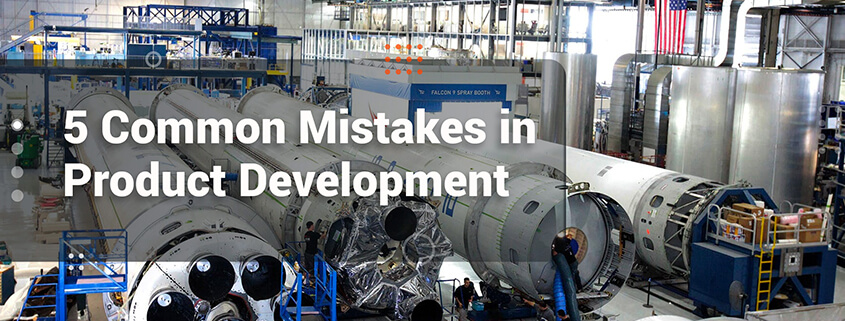We’ve all heard – many start-ups fail, let alone hardware start-ups, which are harder yet. So why even try? Well, if you are addressing a real problem – someone has to do it. Well, that and taking a product to market can be extremely lucrative.
So why do people give generic advice like “passion will get you through the hard times” and “persevere in the face of hardship” – well, it’s because tangible advice is long-winded, boring, and often relegated to libraries and university courses.
But today, we will talk about some tangible and focused advice for product development. Let us look at five common hardware product development mistakes, along with strategies that could help you in the development process.
1. Unforeseen Product Development Costs – Sometimes, it so happens that despite having a good projection plan with a well-defined scope and set of requirements, product design & engineering teams face deviations, roadblocks, or unforeseen challenges that lead to additional development expenses. This could result from decisions made along the development process so far or design issues that were overlooked.
These are easier (read: cheaper) to deal with when they arise earlier in the development cycle; however, early changes can lead to significant deviations in the end product – make sure to check how this affects your original scope and don’t lose track of your target. However, don’t be too stringent with your initial plan – things change. Dealing with challenges effectively early on can mean some added costs but often far less than putting off issues or leaning on a band aid solution until later in the process.
Having a strong product development team is a blessing as they will be able to forecast unique and uncommon issues – and plan/budget for them.
2. Over Designing a Product – Having an unclear end-goal for your product can mean either too many features or an ever-improving design. Yes, your product could probably be better – most, if not all, products can be.
Don’t let this happen to you – create a clear set of requirements and scope. With a clear target, you will know when your product is ready for launch. There will always be time for future versions; if it is a good product, customers will expect a version 2.0!
3. Missing Deadlines – Failure to stay on your project schedule can happen for many different reasons: underestimating project complexity (overestimating the team), over-ambitious timelines, scope changes, unexpected results (analysis, testing, etc.), and a slew of uncontrollable reasons (Covid-19 being a perfect example).
An experienced development team will include time for review and iterations in the project plan. Hurdles in the product development process are to be expected but should not catch you off-guard.
4. Not Using Feedback Effectively – This is a significant topic and has been discussed from many perspectives, including minimum viable product (MVP), iterating quickly, lean product development, fail fast and often fail, launching early, having an embarrassing MVP, etc. Yes – your idea might be great, but you need to make data-driven decisions in transforming your idea into a market-ready solution.
Put your product in the hands of real people (ideally people you don’t know, so they don’t give you a biased response) and get their feedback. The feedback is your data; use it to make your product better.
5. Trying to Do Everything Yourself – Consider how much learning and time it takes for a team to be confident at what they do. Is learning something new the best use of their time? This happens to founders and entrepreneurs that are hyper focused on getting things done. They are often effective, but at what price – could it have been done faster/better/cheaper by someone else? Whether it is someone on your team, a freelancer, or a design firm, it is important to be realistic. Just because you can, does not mean you should.
Keep in Mind
There are many hurdles in the product development process – these are five common mistakes anyone taking a product to market should be aware of. Depending on the product, these challenges will change in significance and priority.
If you aren’t confident identifying and addressing these issues, reach out to someone that is.
About the Author
Ventrify is a product design and manufacturing firm that helps entrepreneurs bring product ideas from concept to market. We take in fledgling ideas and bring them through our iterative design process to create products our clients can be proud of. Then, we work with manufacturing facilities worldwide to bring our clients the highest quality products at competitive prices.
If you have questions or unsure about addressing these issues, reach out to us through our Website, Facebook, or LinkedIn.


